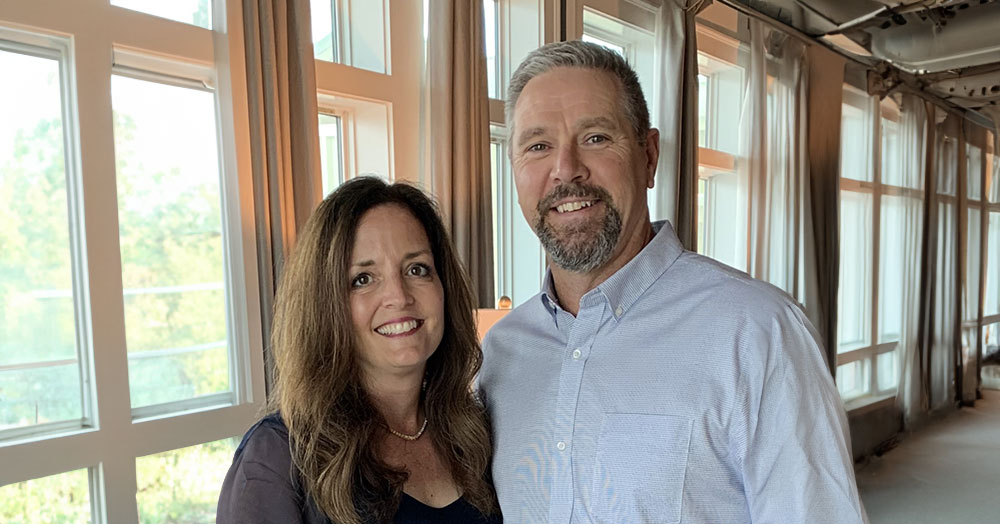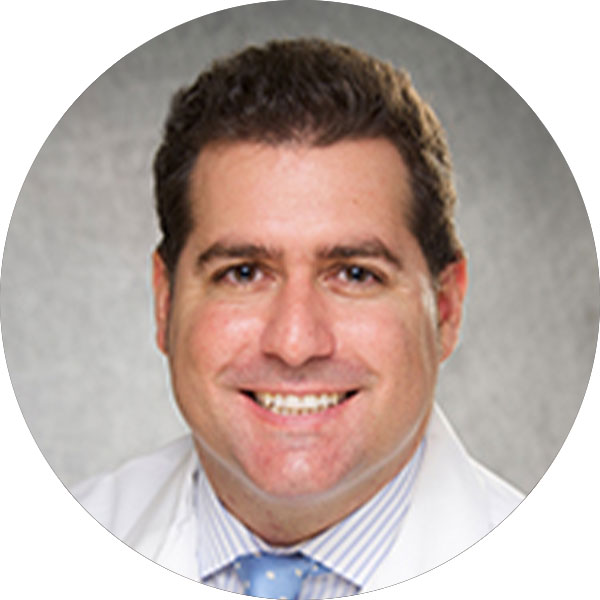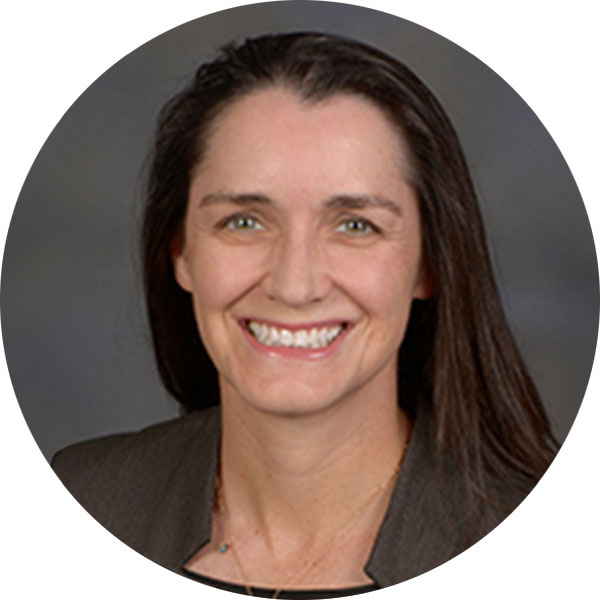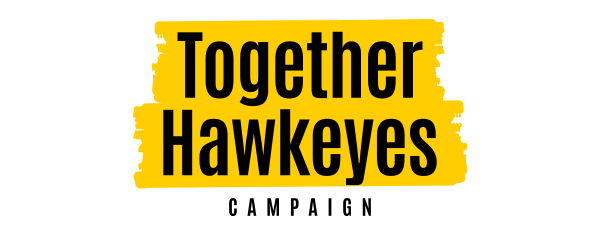Iowa Brain and Eye Surgeons Team Up to Save Patient's Vision
 PHOTO COURTESY ELDRED FAMILY
Christi and Cal Eldred
PHOTO COURTESY ELDRED FAMILY
Christi and Cal Eldred
When Christi Eldred (93BA) learned she had a fistula behind her right eye—a dangerous condition that threatened her vision and, potentially, her life—she could have traveled anywhere for treatment.
She and her husband, former Hawkeye and Major League Baseball pitcher Cal Eldred, had medical connections around the nation from his days as a player and coach. But the Eldreds knew Christi would receive unparalleled care at University of Iowa Hospitals & Clinics, just a half-hour drive from their home in Mount Vernon, Iowa.
Thanks to a quick-acting team of UI neurologists and ophthalmologists—and after two marathon surgeries—Christi Eldred’s decision to stay in her home state for treatment turned out to be the right game plan. “I just knew they were going to take care of me—and they did,” she says.
The first signs of trouble surfaced in fall 2021, when Eldred began noticing a prism-like distortion in her vision’s periphery. Eldred had been fighting a recent sinus infection and headaches, but this seemed different. Her right eye became swollen and red, and an uncomfortable pressure built up behind it, keeping her awake at night.
“I just knew they were going to take care of me—and they did.” —Christi Eldred
Eldred’s family physician and eye doctor were stumped. They referred her to UI Hospitals & Clinics, where she underwent a battery of tests in the Emergency Department, including an MRI scan. The images ruled out an abscess or tumor, but a closer look by ophthalmologists and further testing the following day revealed the problem: carotid cavernous fistula. Simply put, there was an abnormal connection between a carotid artery and a vein called the cavernous sinus, creating a backflow of blood and putting pressure on the back of Eldred’s eye. Left untreated, there was a chance the fistula could rupture and cause bleeding in the brain.
 PHOTO: UI HEALTH CARE
Santiago Ortega-Gutiérrez, clinical associate professor of neurology, neurosurgery, and radiology
PHOTO: UI HEALTH CARE
Santiago Ortega-Gutiérrez, clinical associate professor of neurology, neurosurgery, and radiology
UI neurointerventional surgeon Santiago Ortega-Gutiérrez examined Eldred and put her on a fast track to the operating room. In an initial procedure, which lasted about five hours, the clinical associate professor of neurology performed an angiogram through an artery in her arm to map out the path to the problem area between her brain and eye. He then attempted to embolize the fistula using a catheter inserted into the femoral vein in her thigh but was ultimately unable to reach it because the usual pathways were clotted. Knowing they’d need to take a more direct route, Ortega-Gutiérrez brought in an orbital surgeon, clinical professor of ophthalmology Erin Shriver (06R), to help him access the superior ophthalmic vein—a small blood vessel that travels from the front of the eye socket to the cavernous sinus.
Shriver consulted with colleagues through the North American Society of Academic Orbital Surgeons before devising a new plan with Ortega-Gutiérrez and practicing the technique with her oculoplastics team. Once Shriver was prepared for the surgery, she spoke with Eldred and explained that, while she hadn’t performed this exact procedure before, she was confident in this territory.
“I thought it was important that I be open and upfront with her because she had a very serious condition, and I wanted her to have the best outcome possible,” Shriver says. “We discussed the option of her getting a second opinion or going elsewhere for her surgery, but she stressed that she felt comfortable with our team.”
 PHOTO: UI HEALTH CARE
Erin Shriver, clinical professor of ophthalmology and visual sciences
PHOTO: UI HEALTH CARE
Erin Shriver, clinical professor of ophthalmology and visual sciences
With Eldred’s symptoms progressing rapidly, she gave the go-ahead for the orbitotomy early the following week. In the operating room, Shriver made an incision just above Eldred’s right eyelid crease, dissecting into the orbit, or eye socket, and navigating through the fat and tissues to isolate the superior ophthalmic vein. She then stabilized the delicate vein and elevated it for placement of the microcatheter, giving Ortega-Gutiérrez an open pathway to the fistula.
After the second five-hour surgery—which at times required improvisation and trial and error with different instruments—Shriver, Ortega-Gutiérrez, and the Iowa team successfully sealed off the abnormal connection. Shriver credits the unique teamwork between surgeons, fellows, technicians, nurses, and anesthesiologists for the successful outcome. “There were several times during the case that we could have easily given up,” she says. “We knew that neurosurgery was her only other option, however, and so we persisted.”
Ortega-Gutiérrez says the unique surgery was only possible because of the UI’s multidisciplinary expertise in neurointerventional surgery and ophthalmology. Because of that collaboration, Eldred did not have to undergo a more aggressive, invasive brain surgery.
“There were several times during the case that we could have easily given up. We knew that neurosurgery was her only other option, however, and so we persisted.” —Dr. Erin Shriver
“In specialized centers like ours, we have the luxury of having a great deal of endovascular and oculoplastic expertise,” says Ortega-Gutiérrez. “Working together with Dr. Shriver allowed us access into the small veins located within the orbit to open the pathway for me to get into the brain.”
With the pressure relieved from her ocular nerves, Eldred’s vision soon corrected itself, and she made a full recovery. The radiation from imaging resulted in temporary hair loss, and it took her a few weeks to fully get back on her feet, but Eldred was thankful that doctors were able to attack the issue in a way that minimized the trauma to her body. Two years later, she has 20/20 vision, and follow-up testing has given her a clean bill of eye health.
“For people like me, whose situations are complicated, you need doctors who are not afraid to try complicated things,” says Eldred, a mother to five adult children and two grandkids. “They saved my eye, so there’s no better outcome.”

